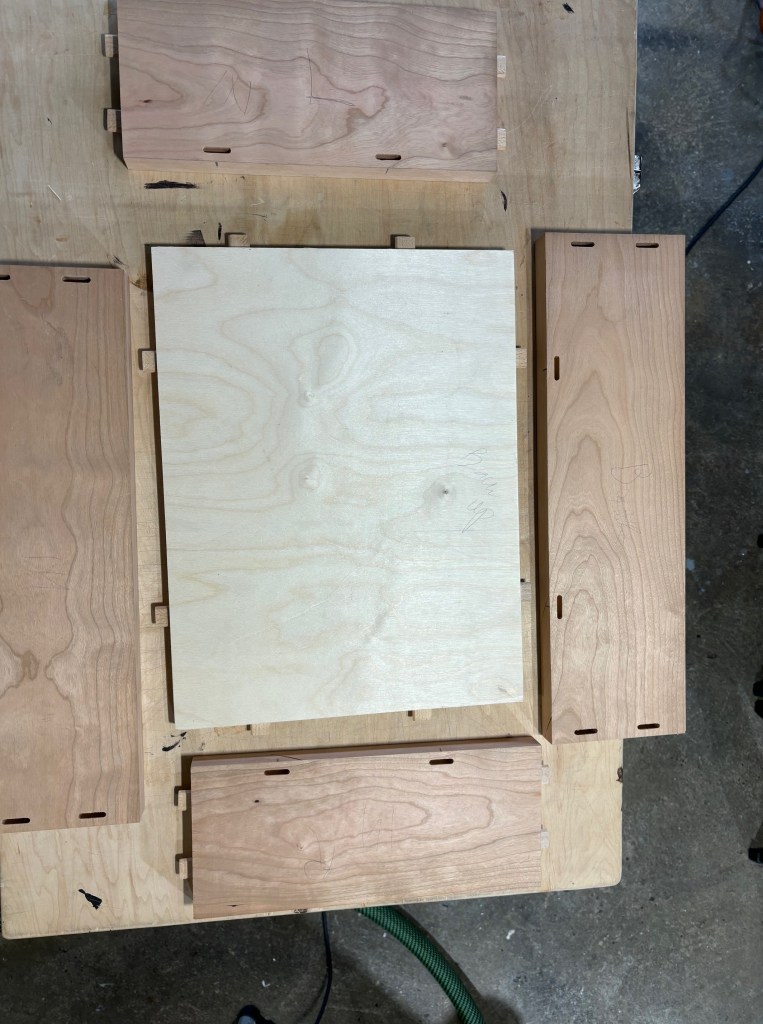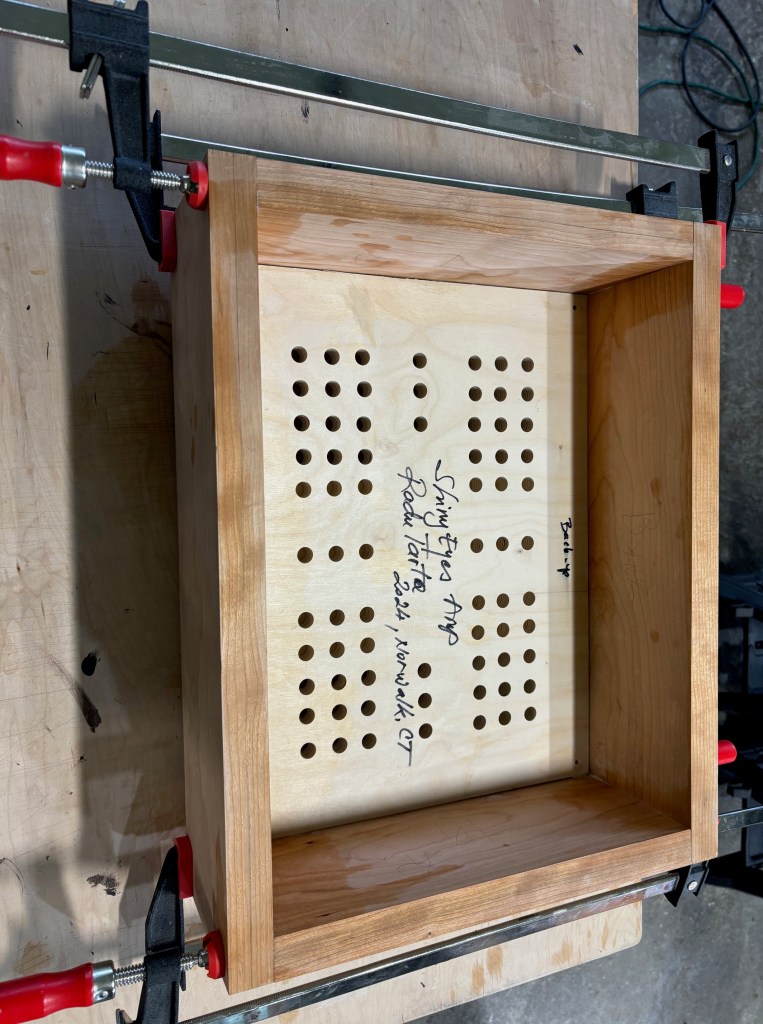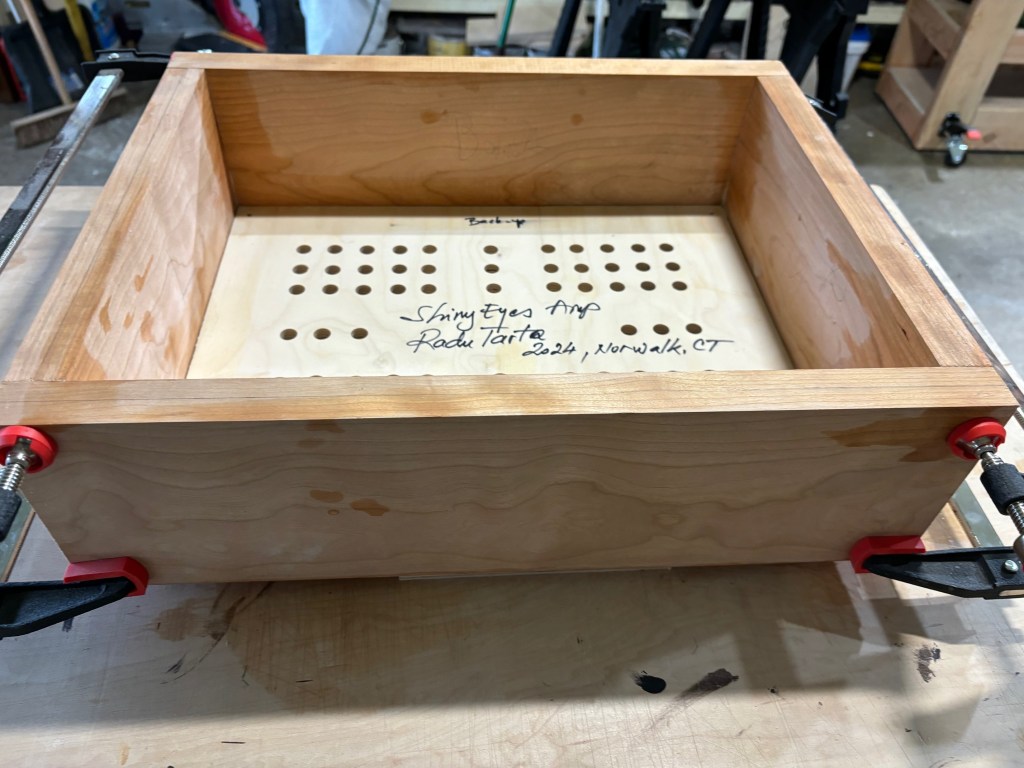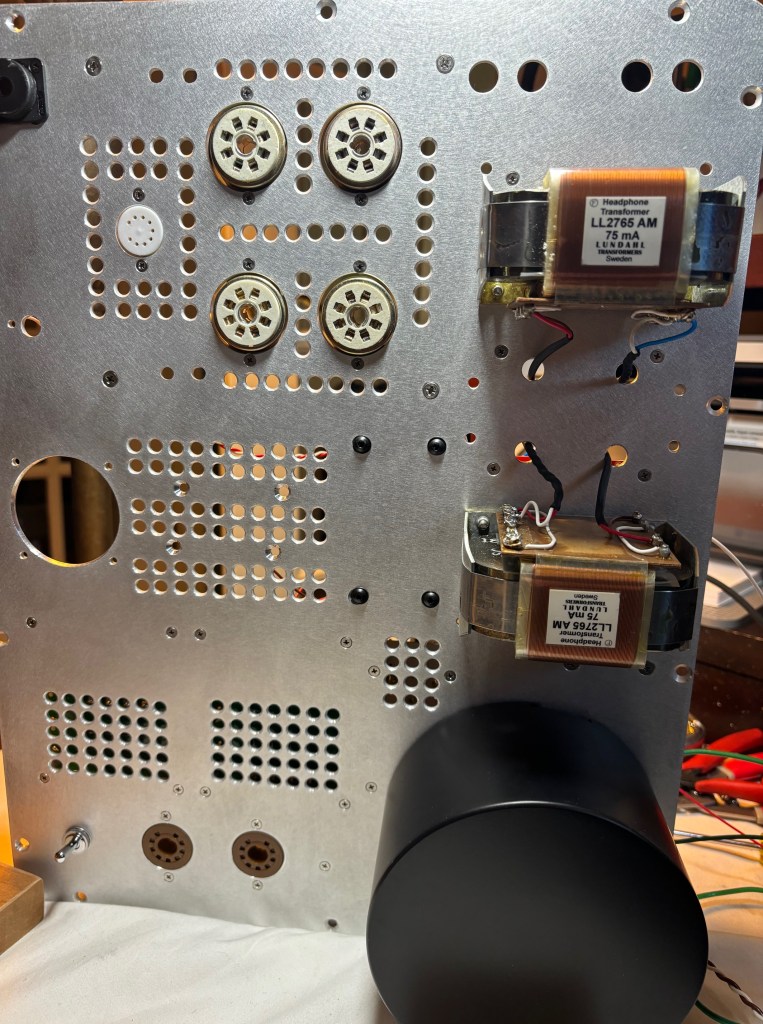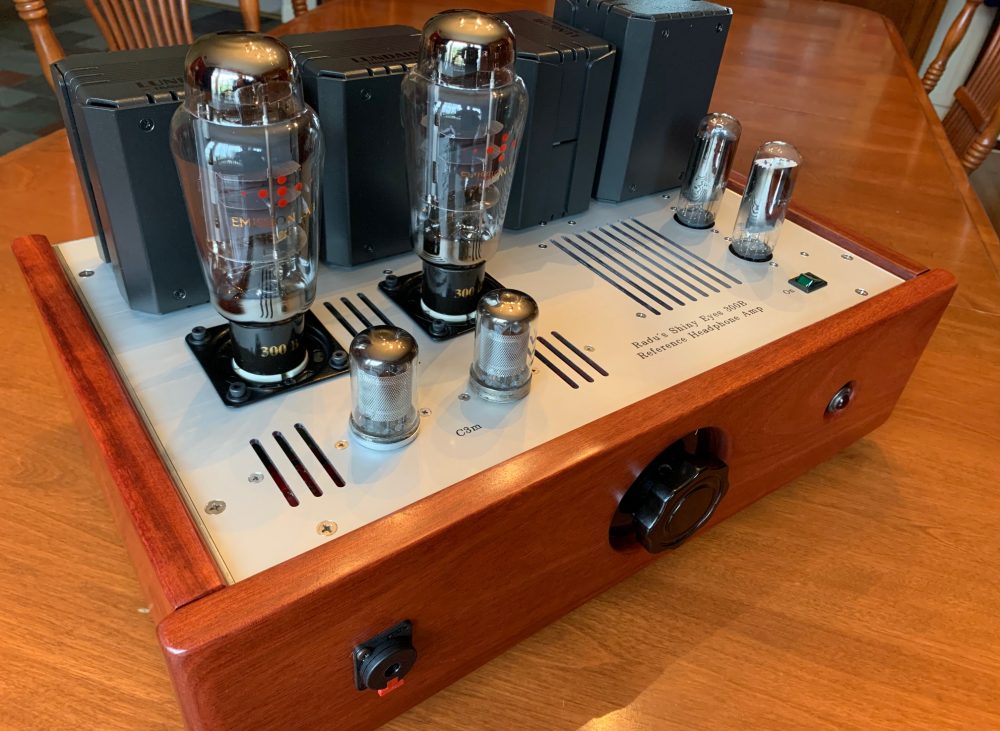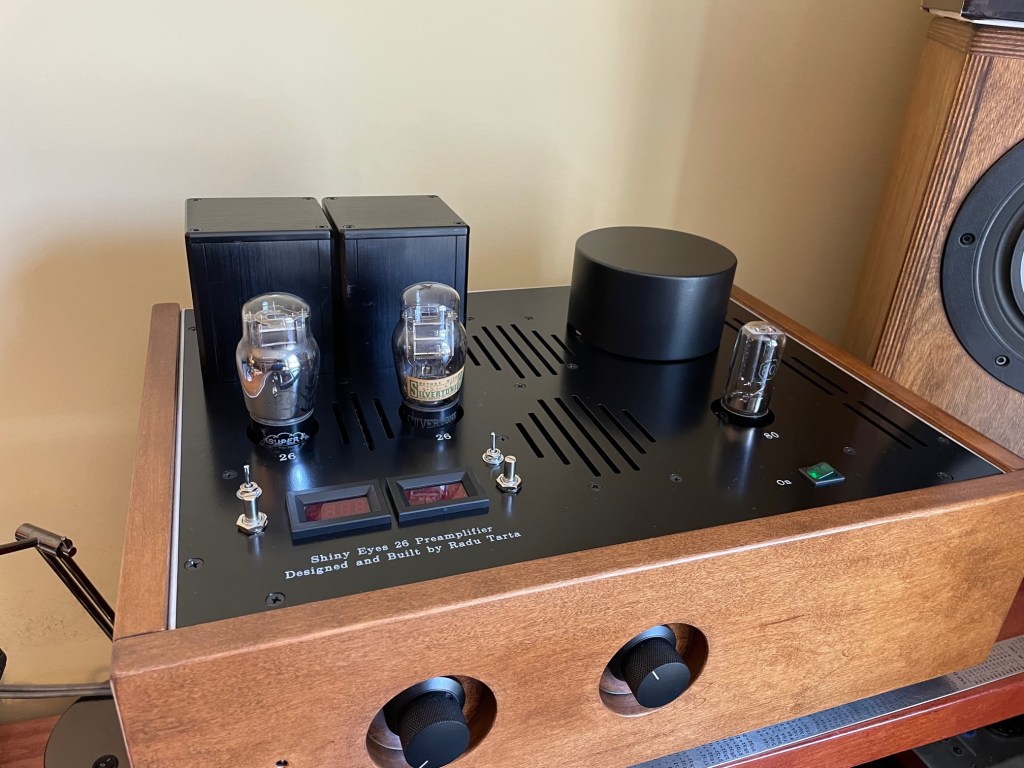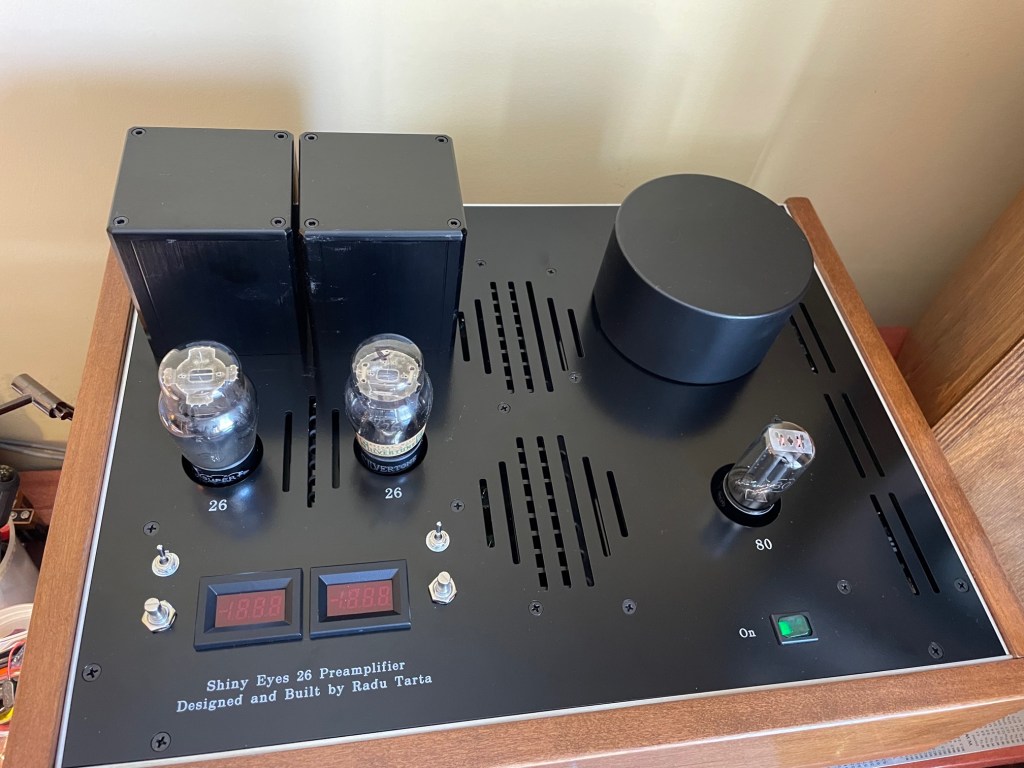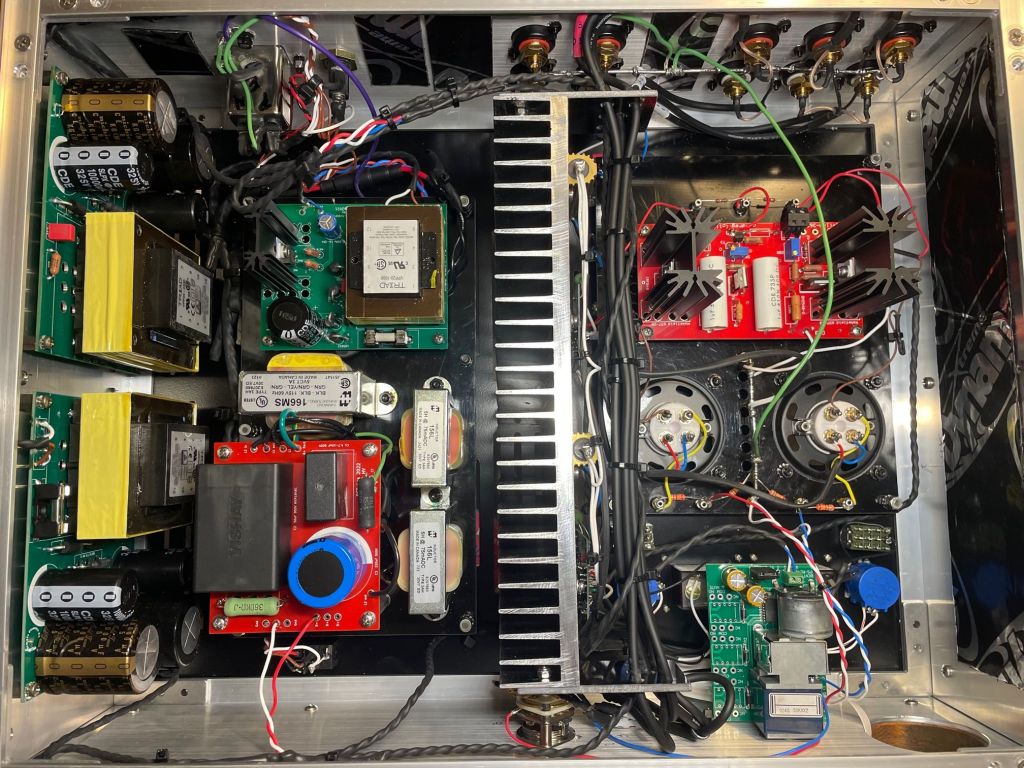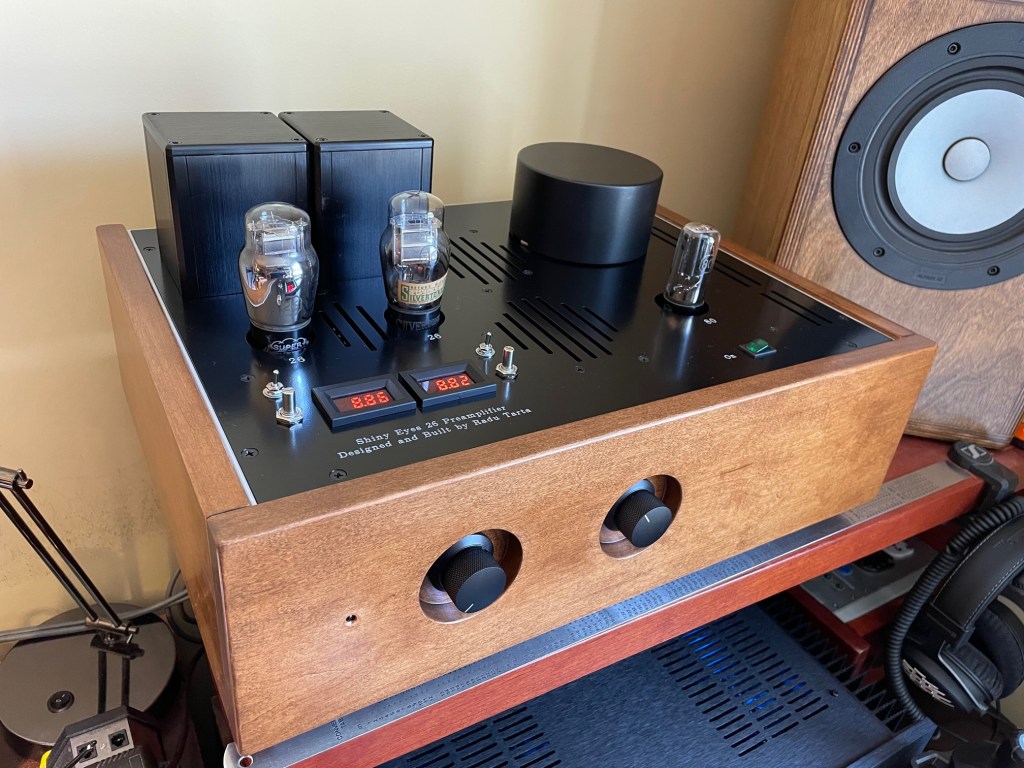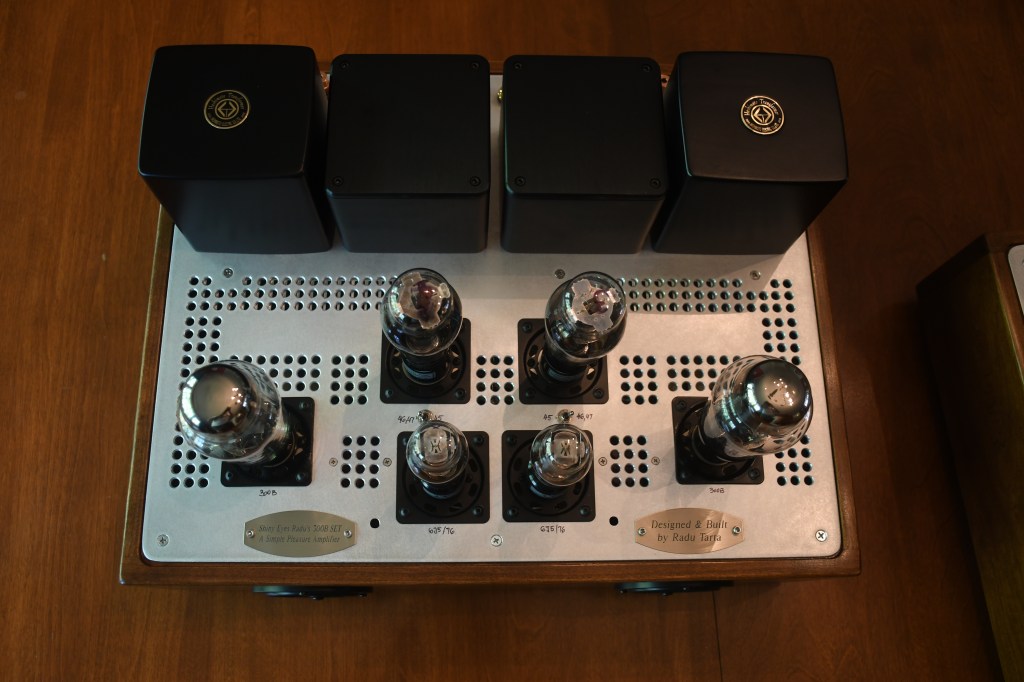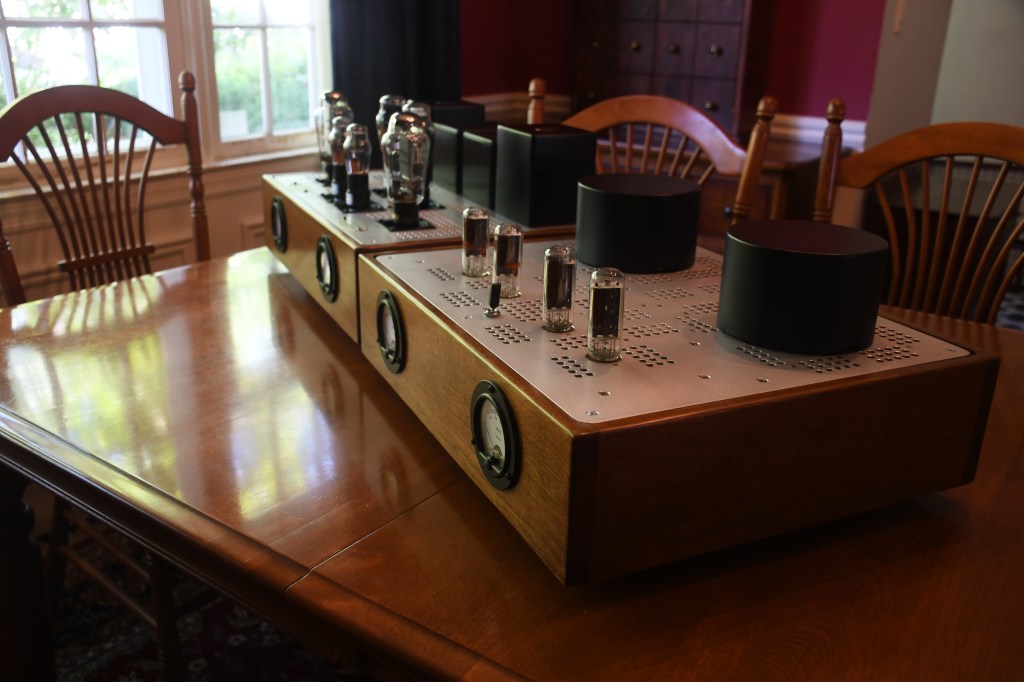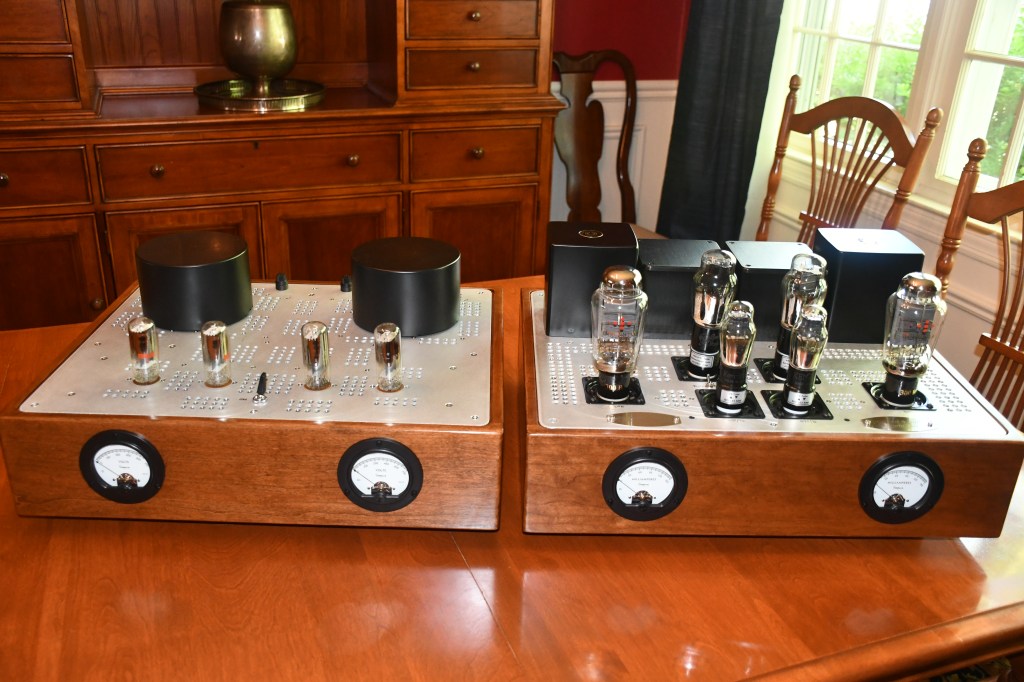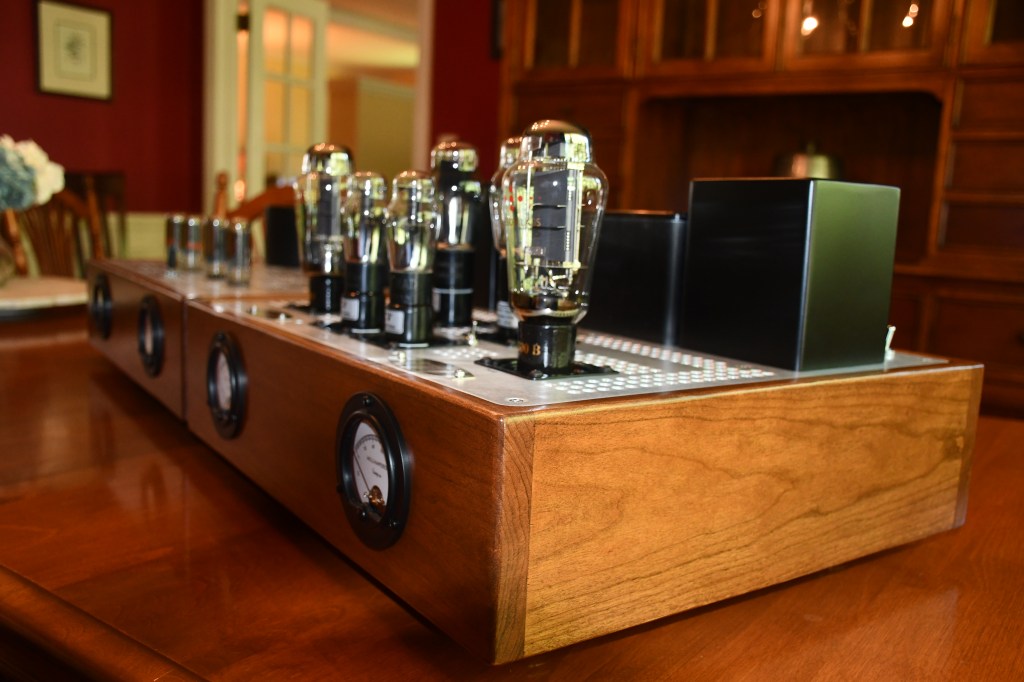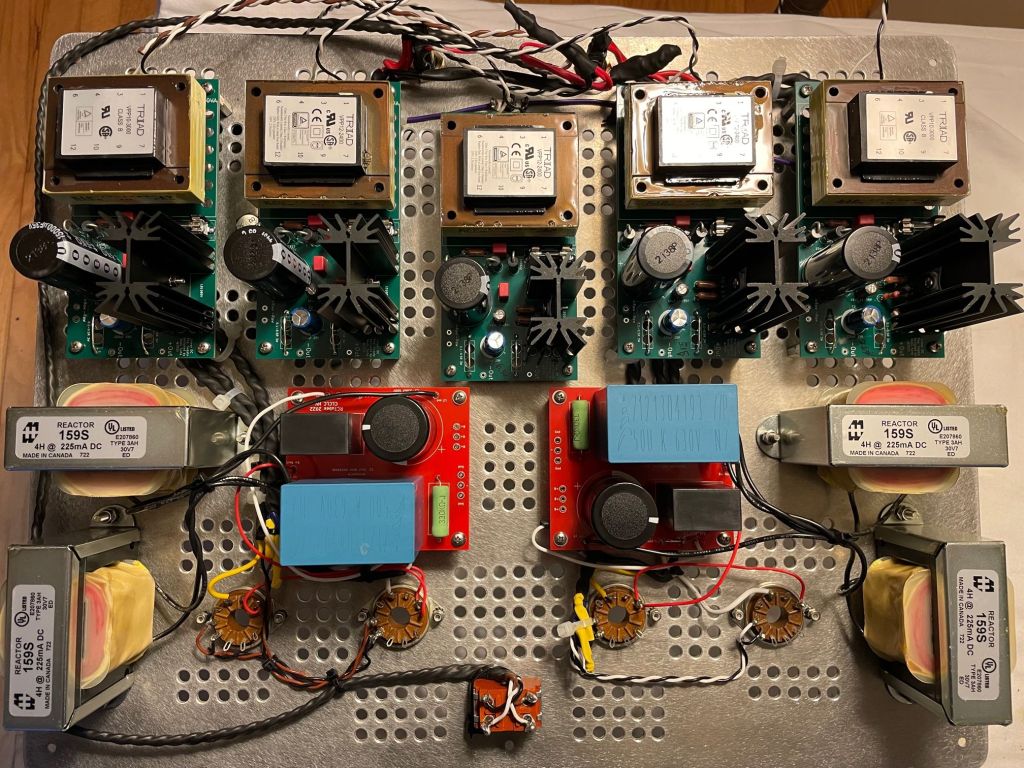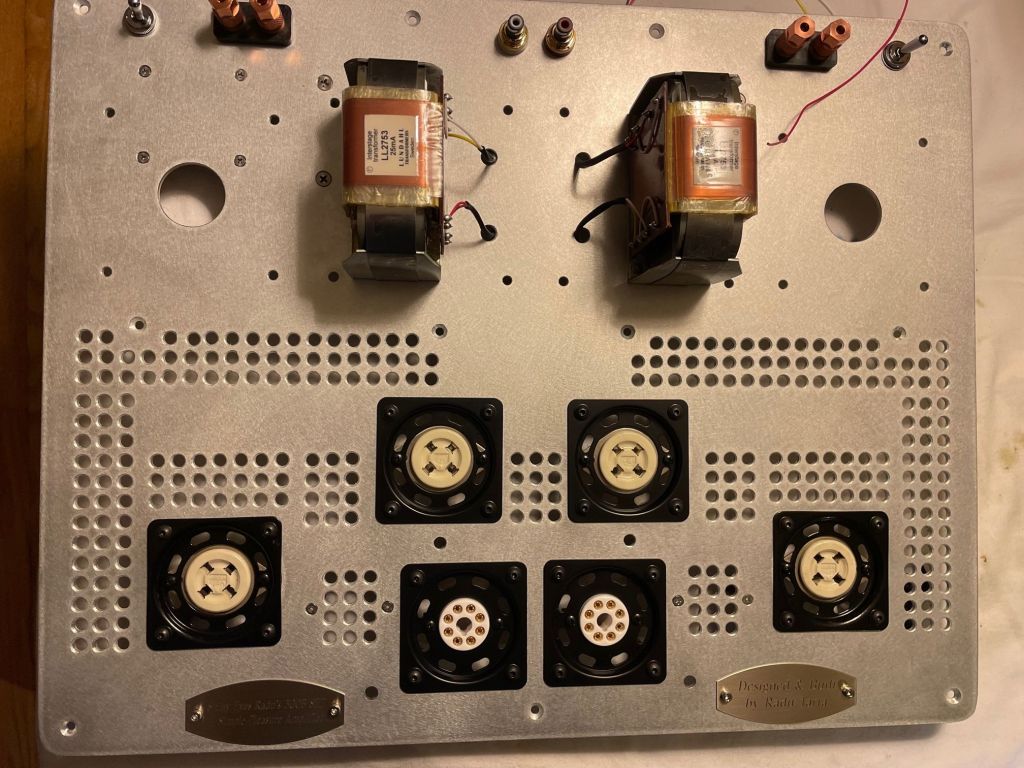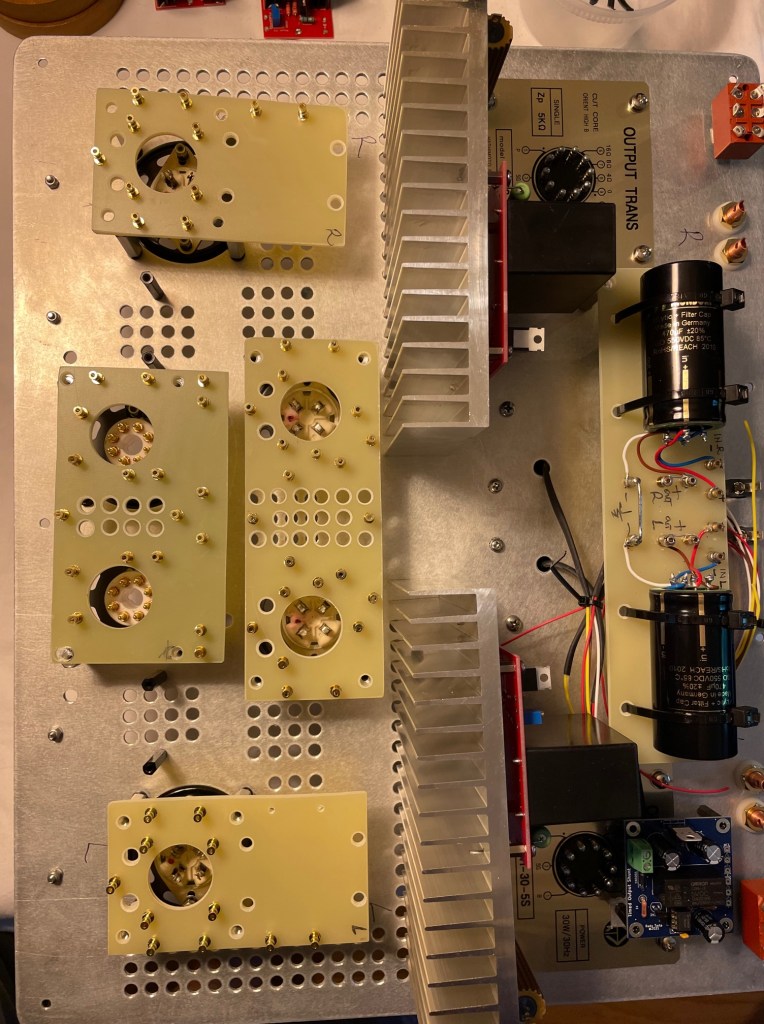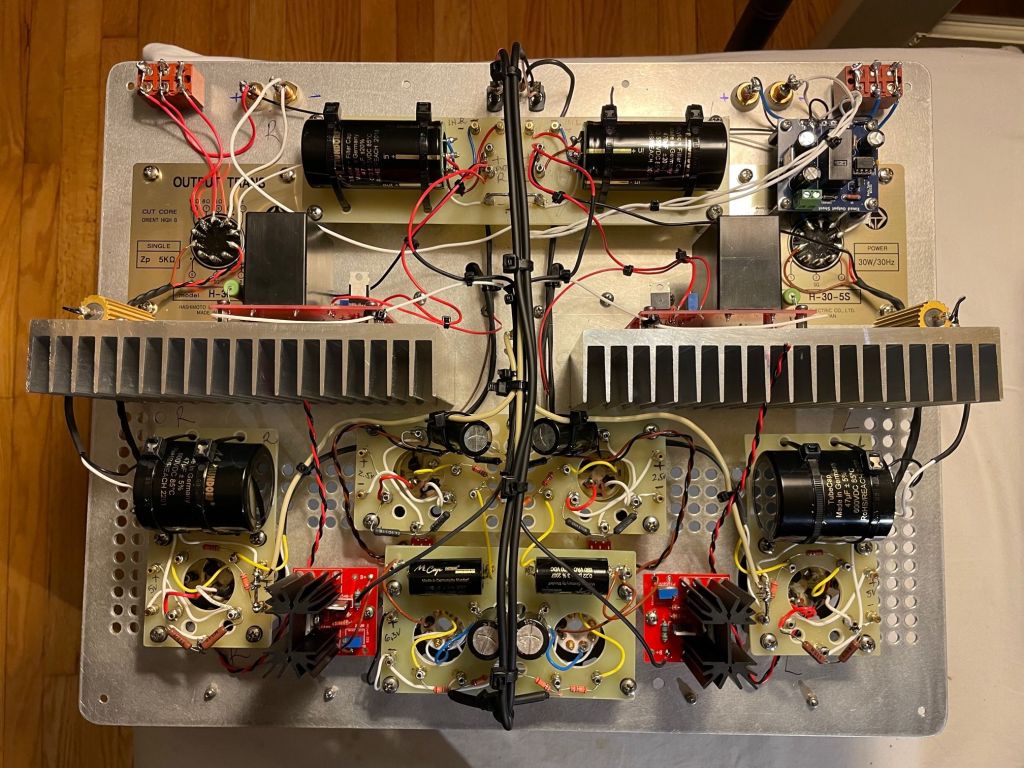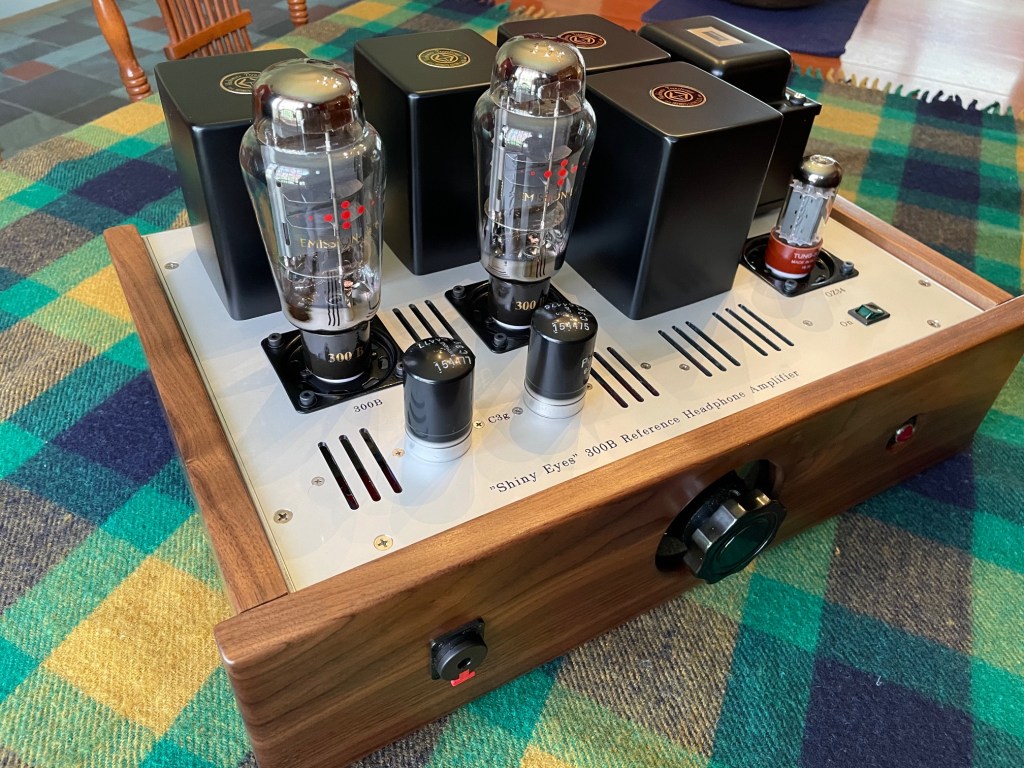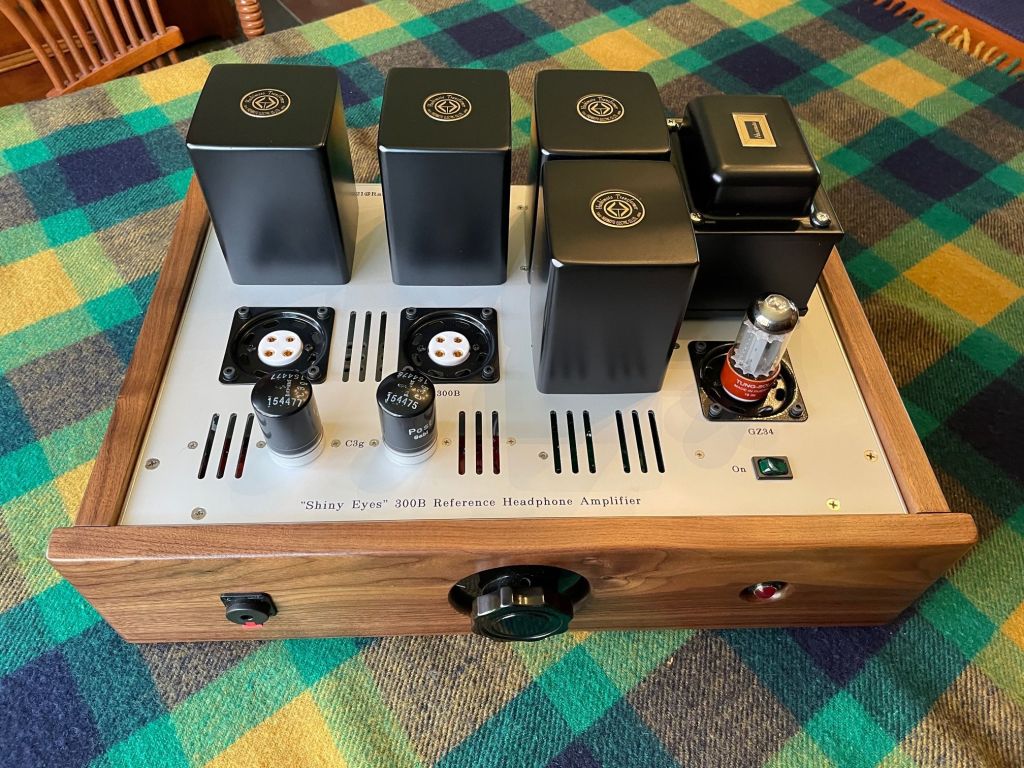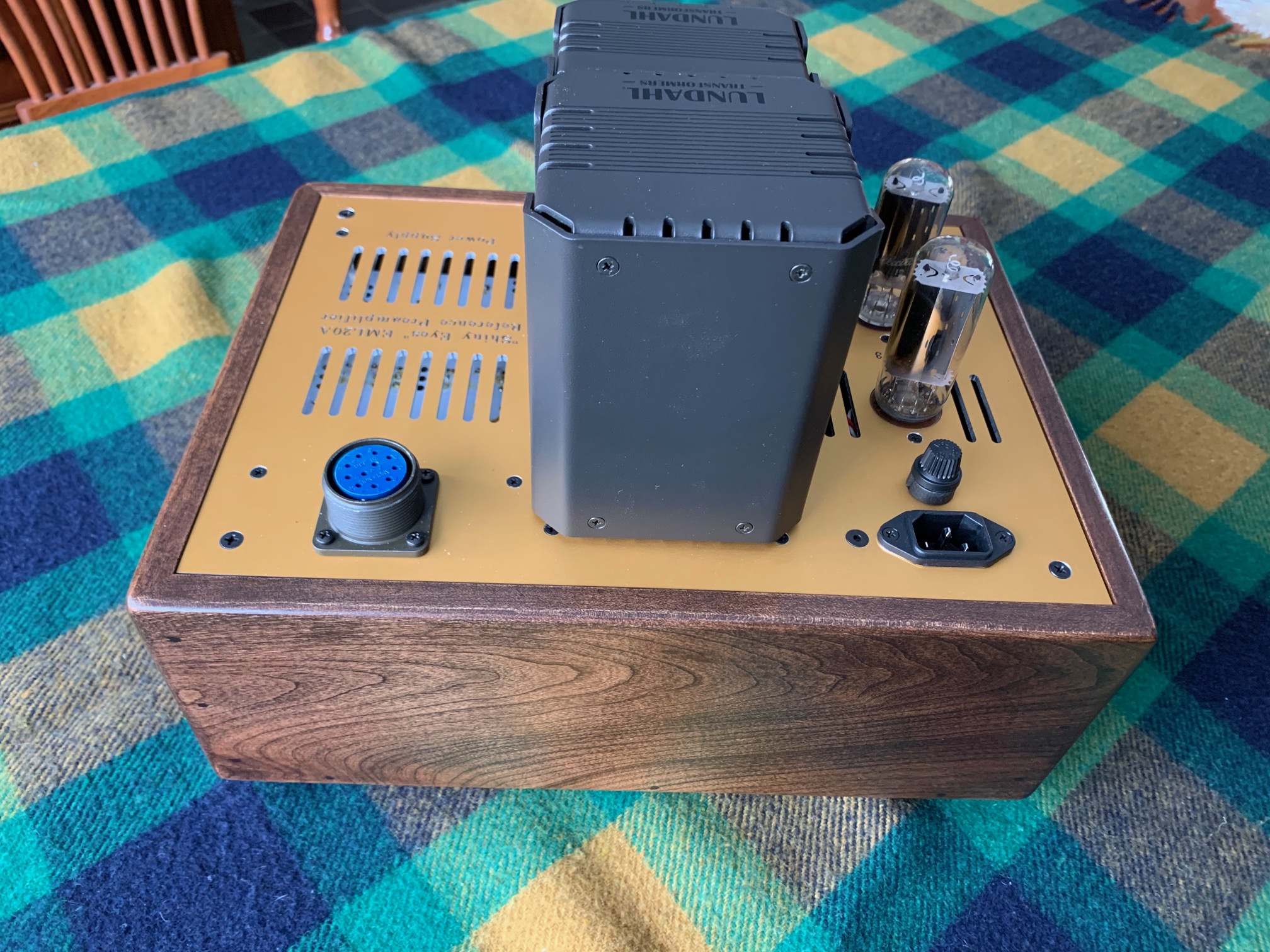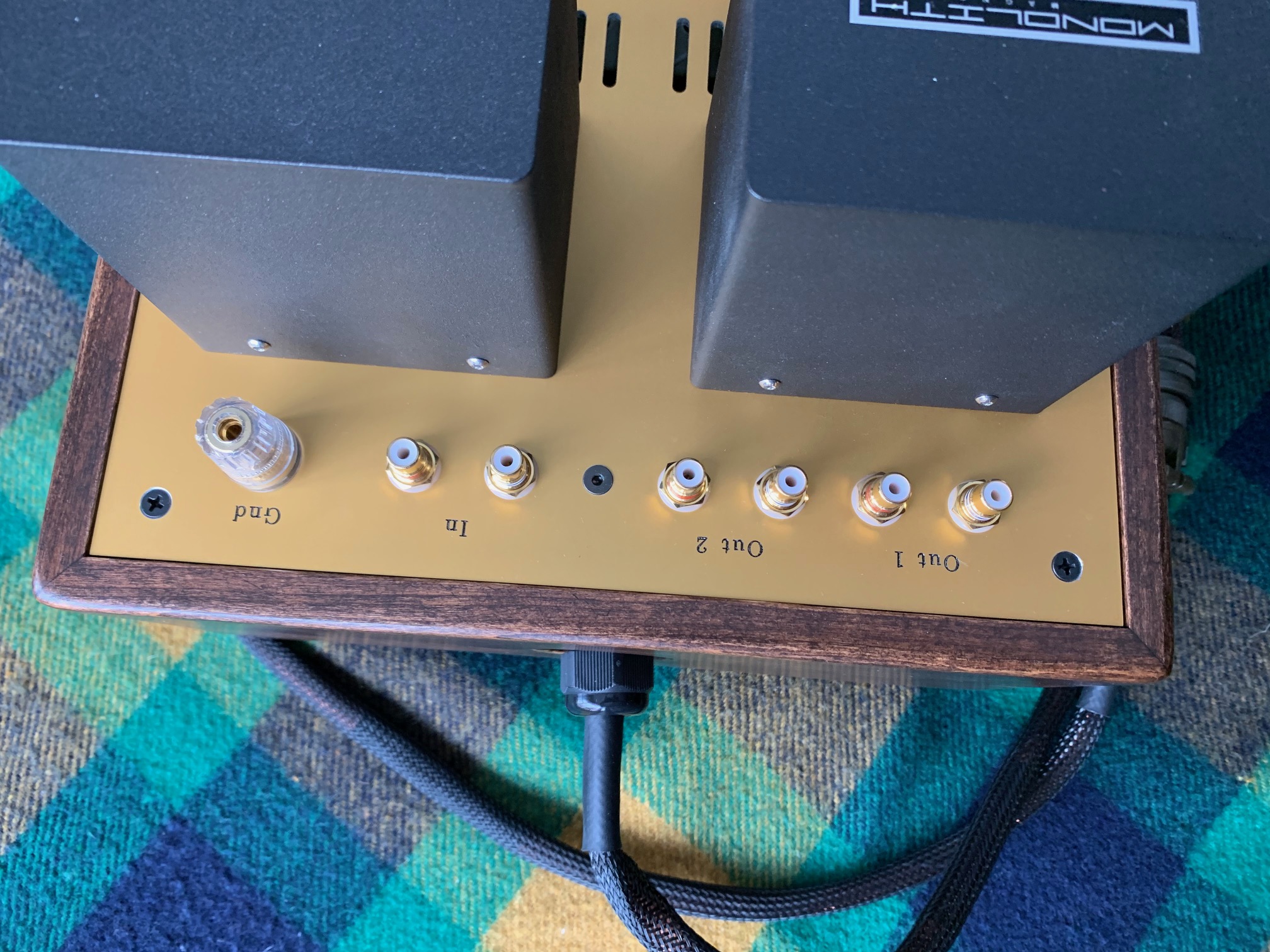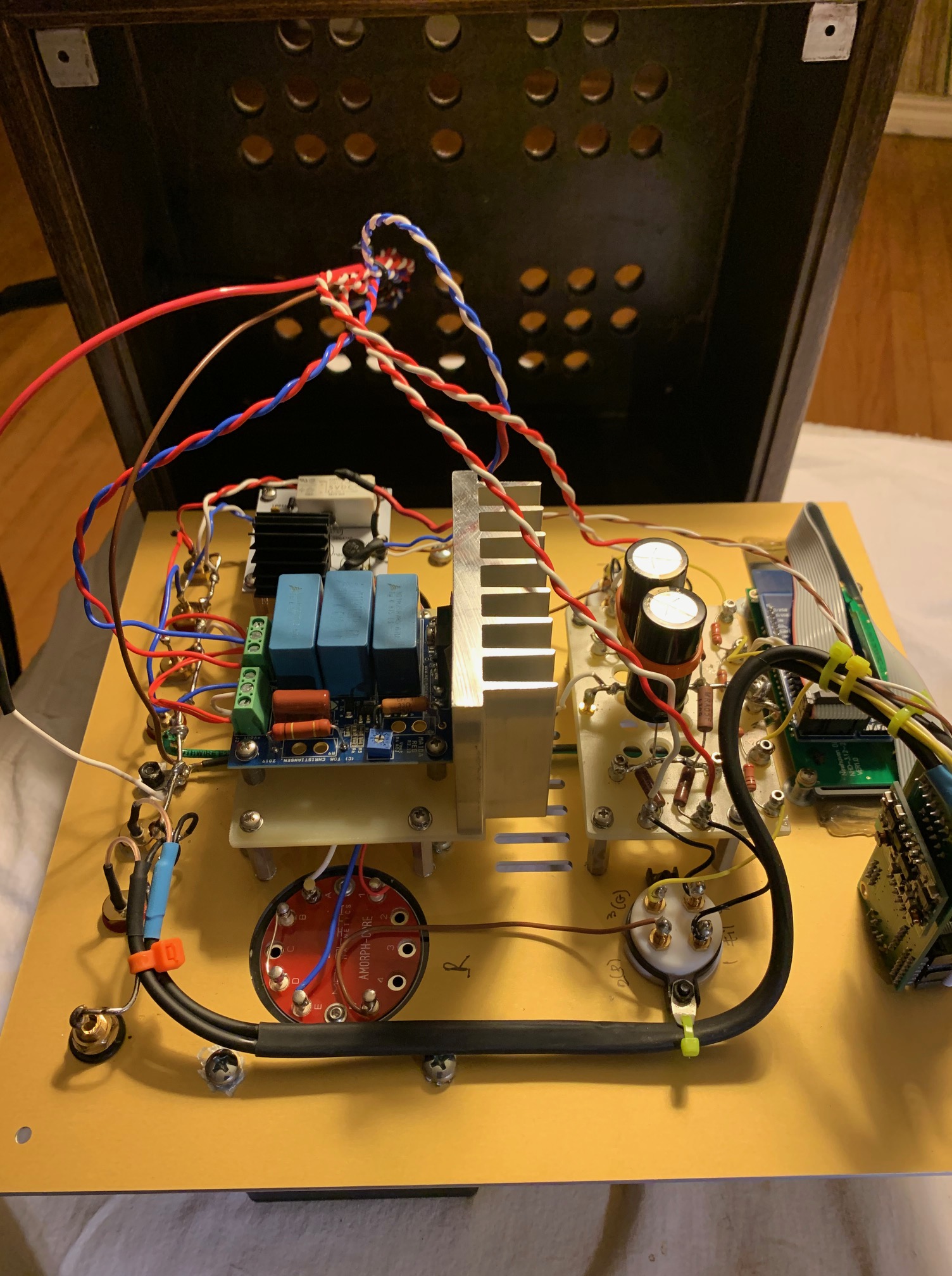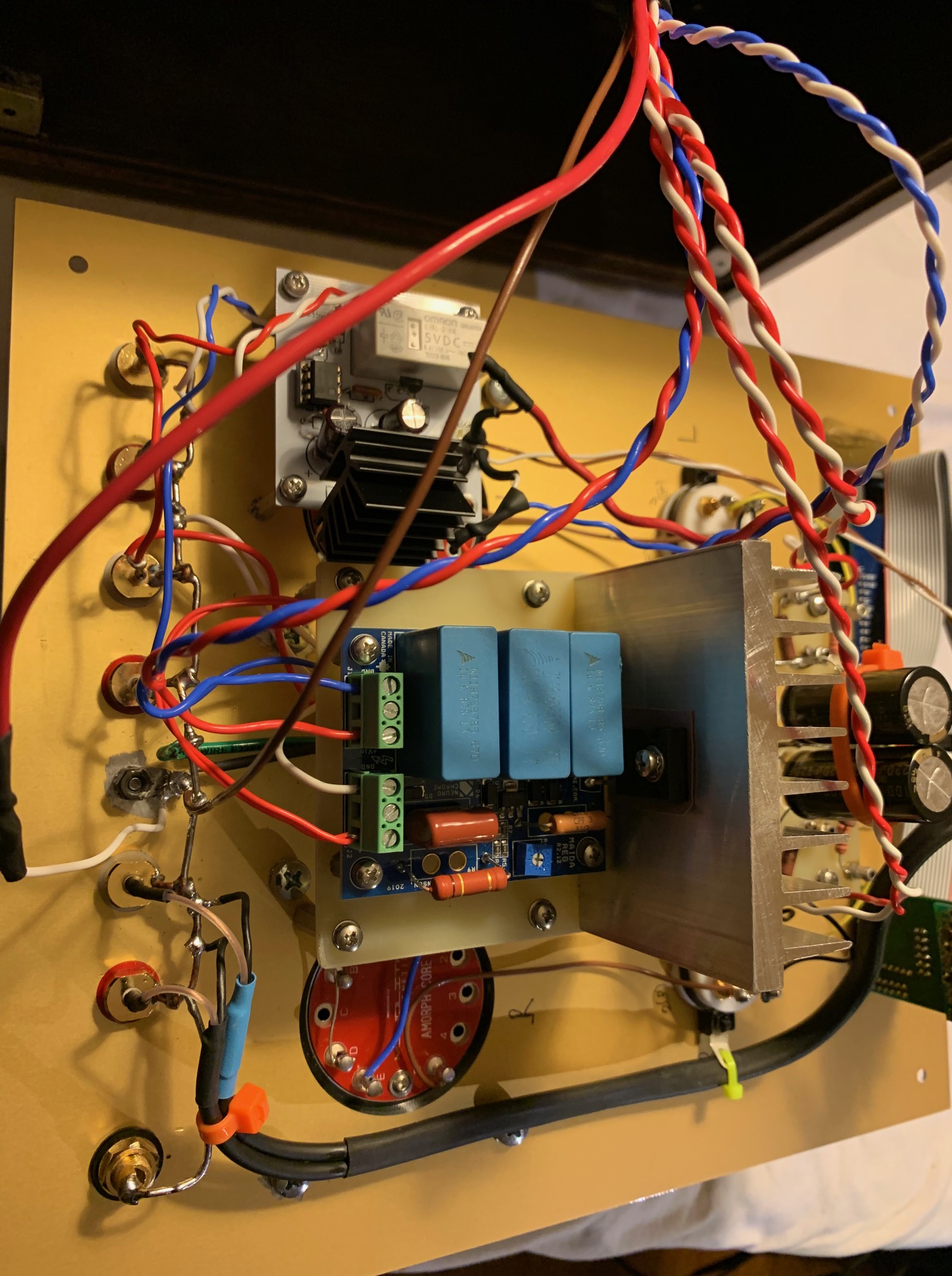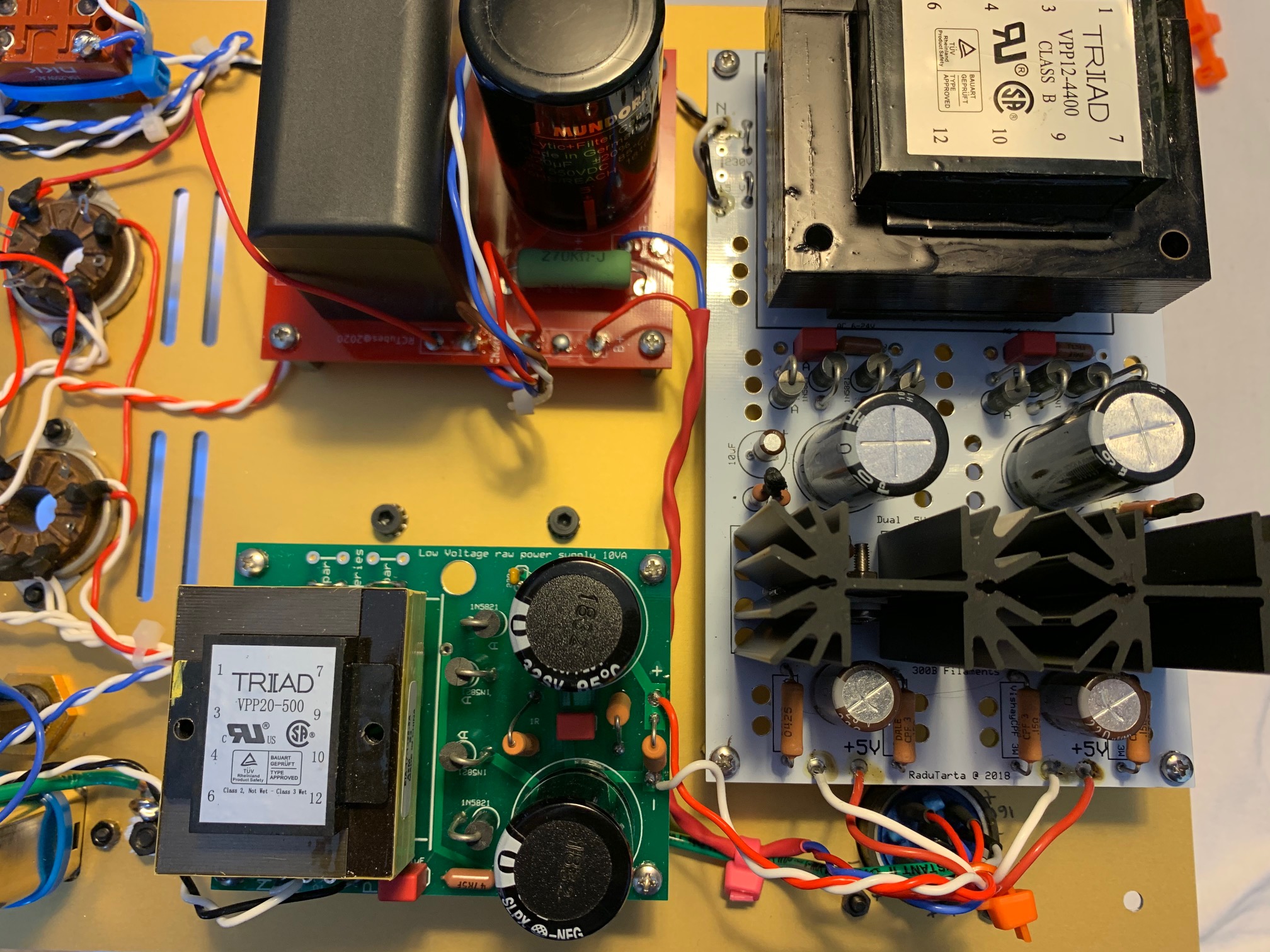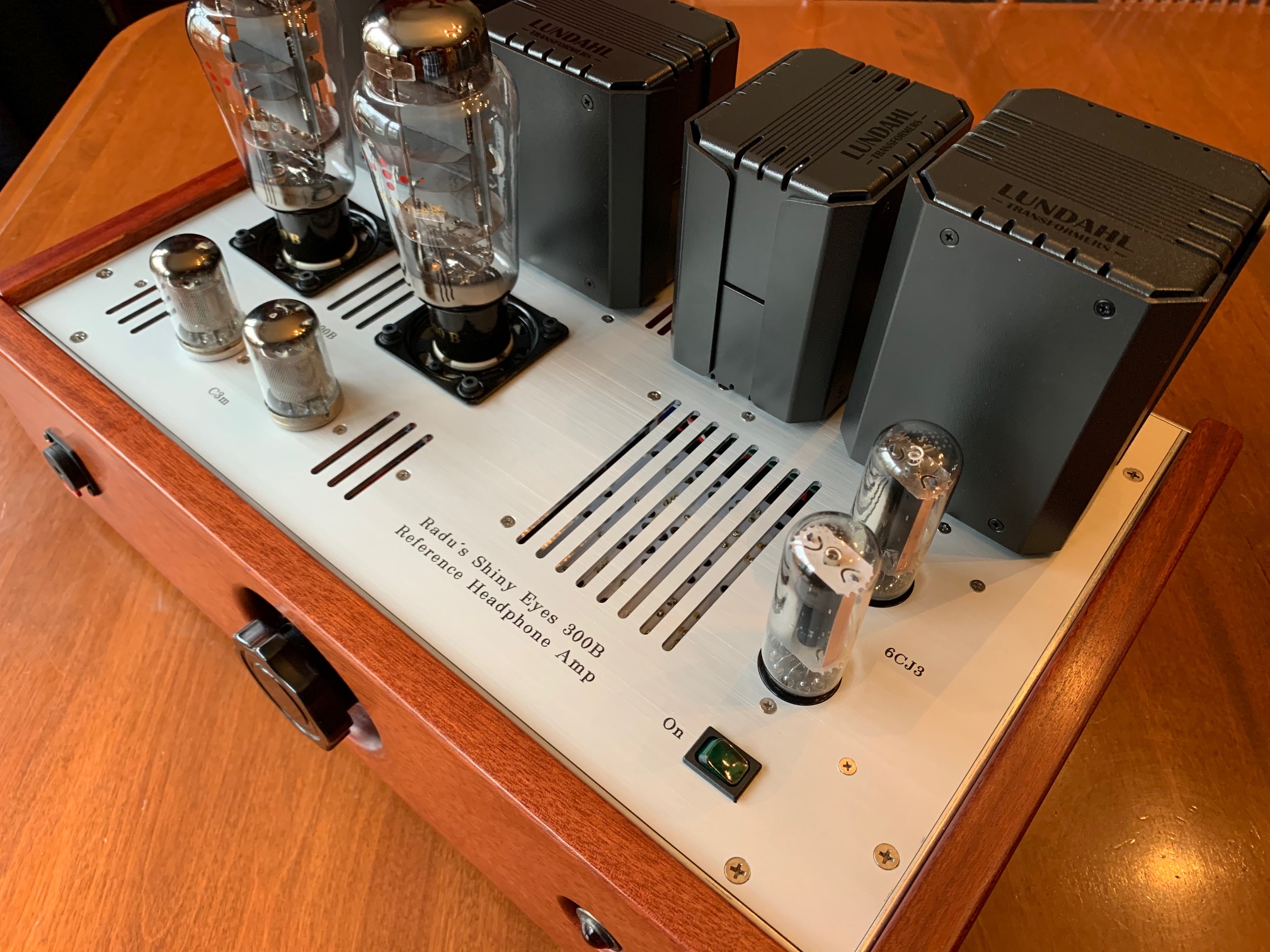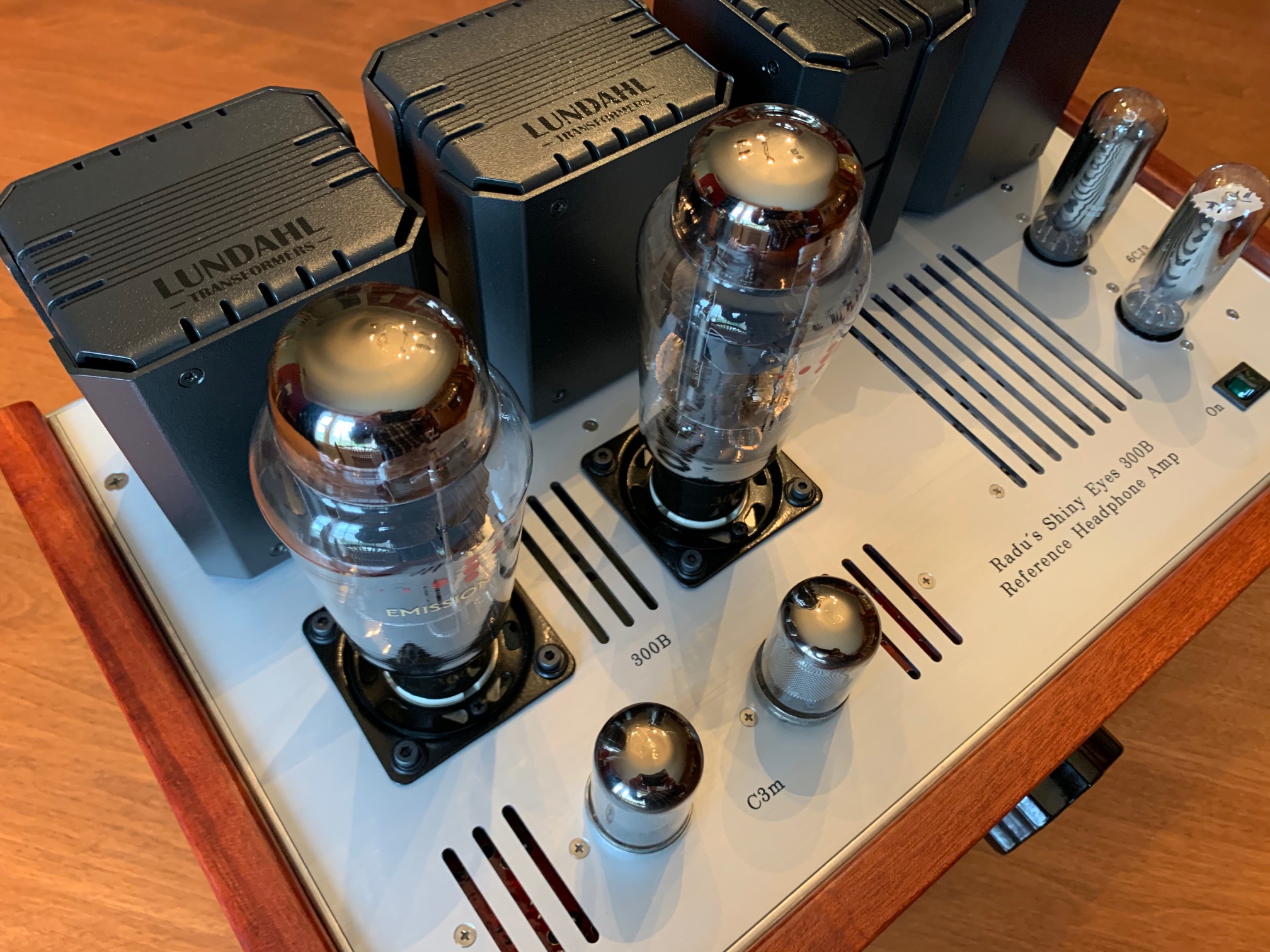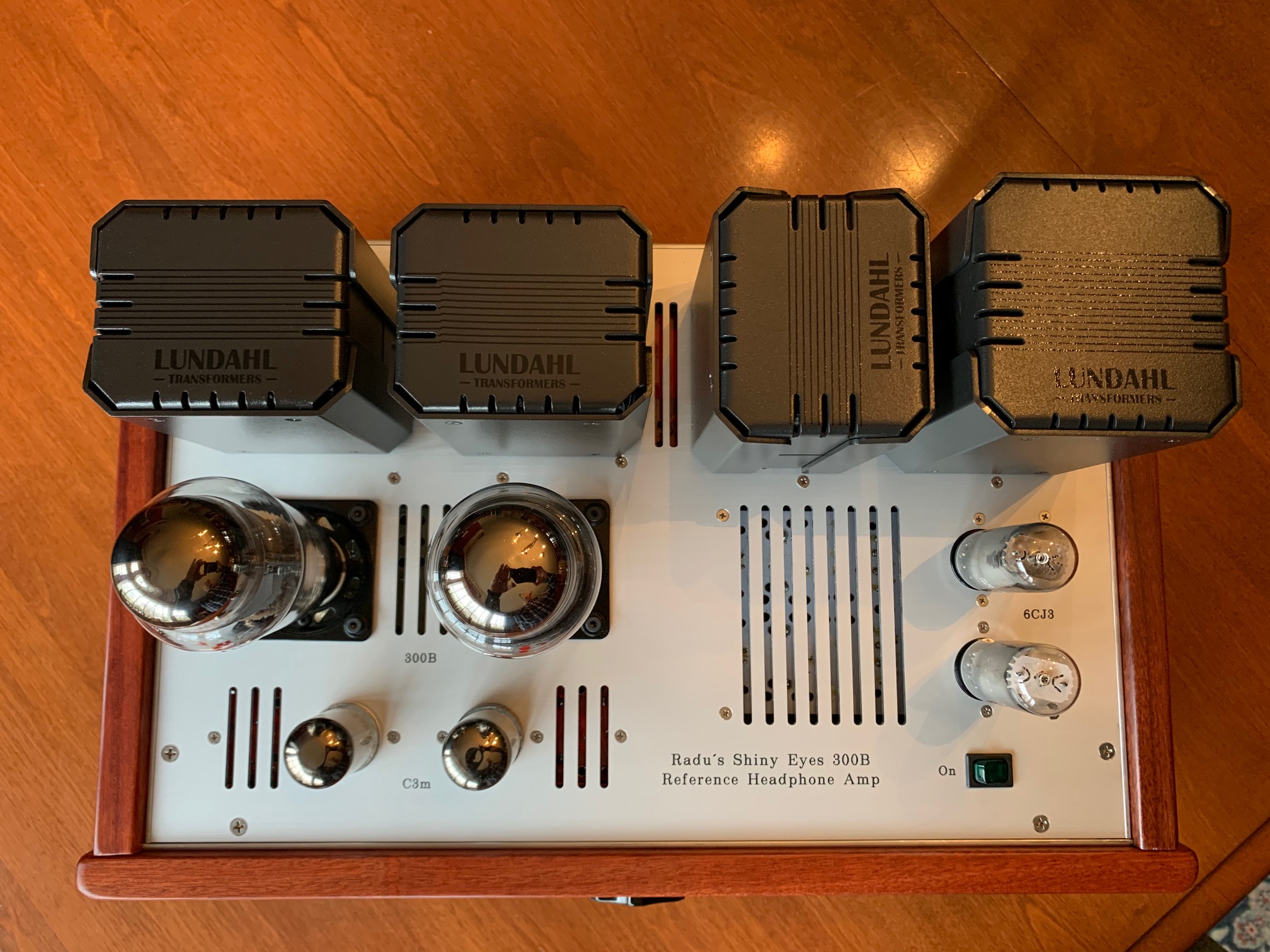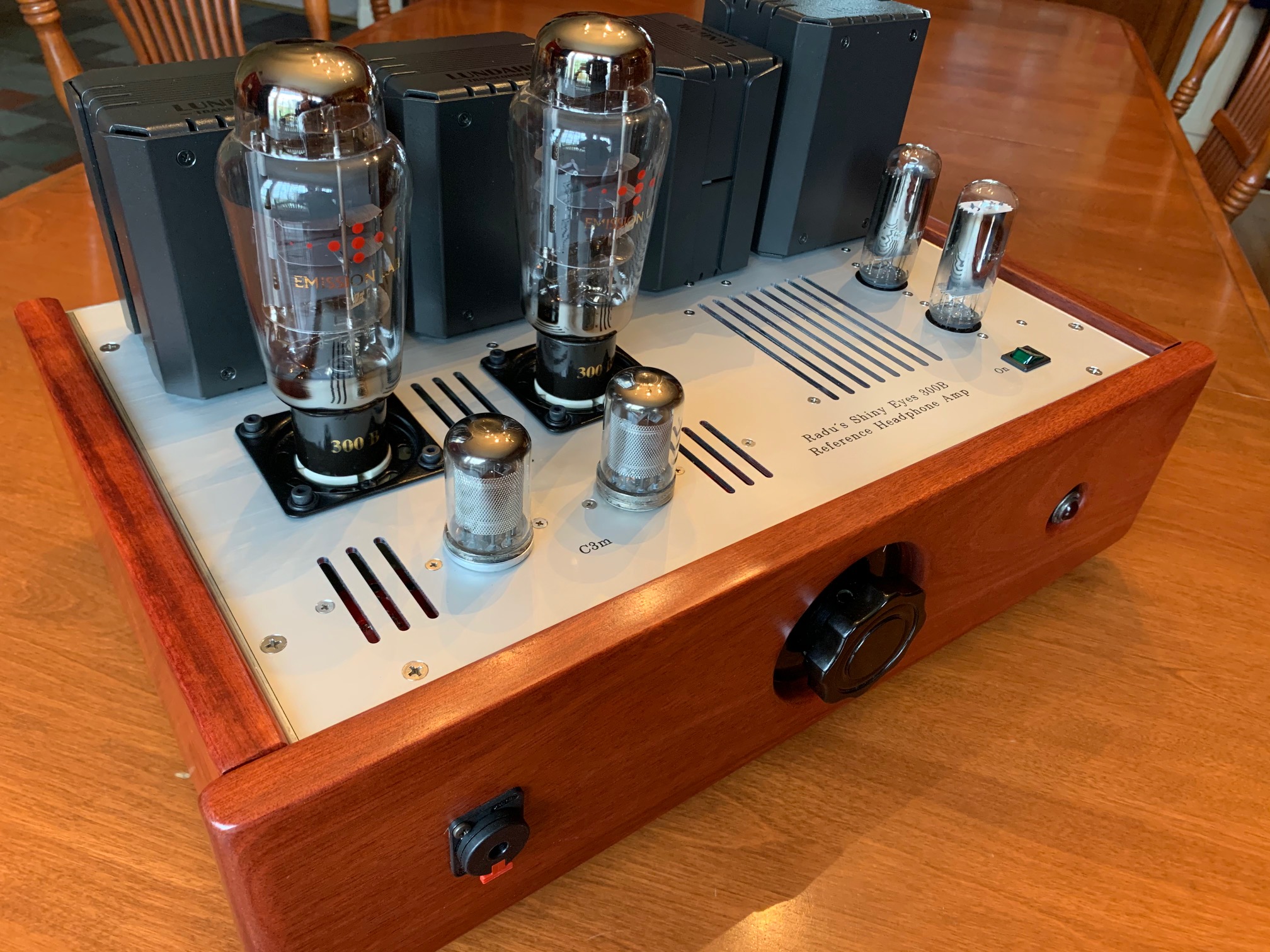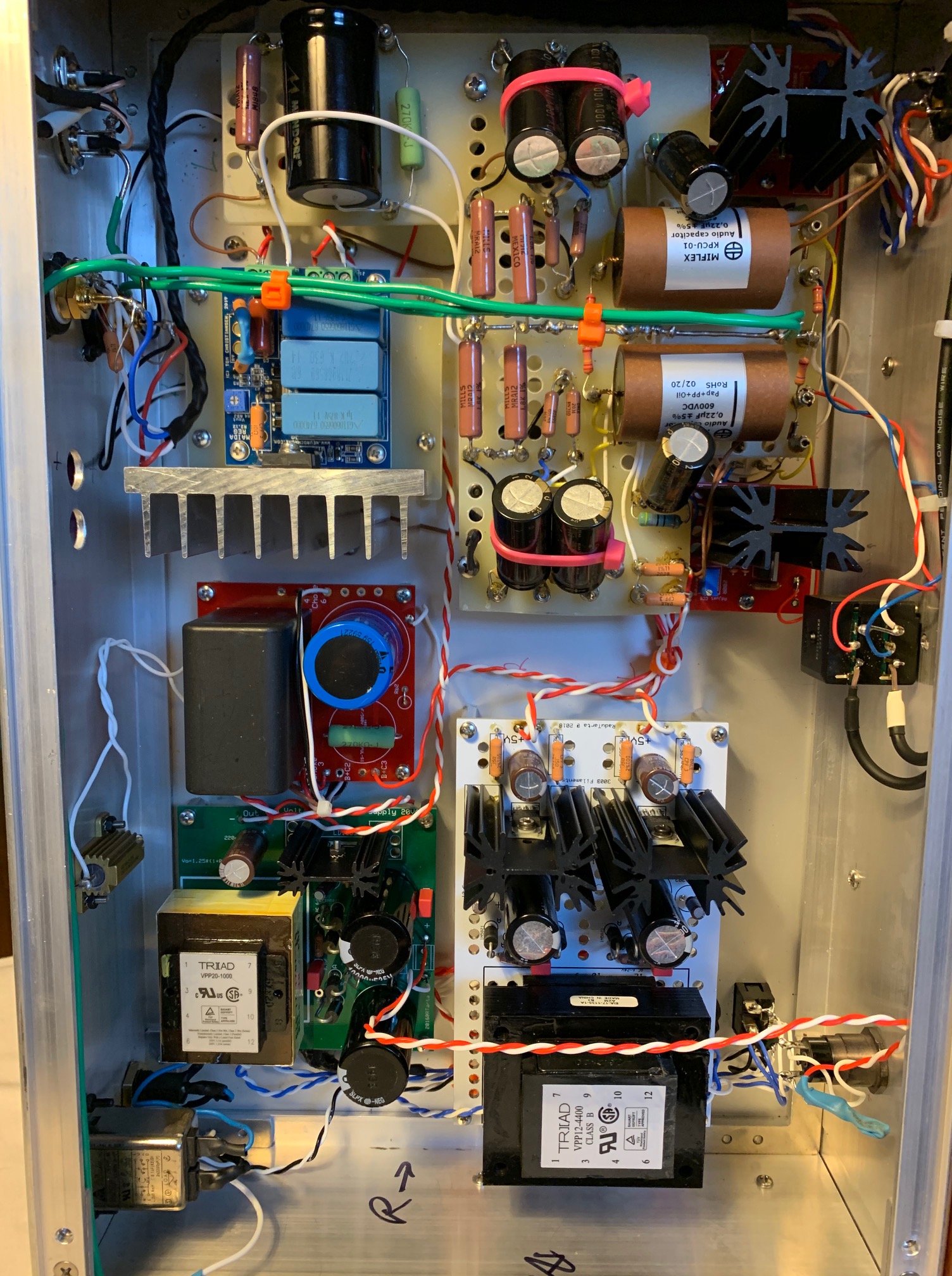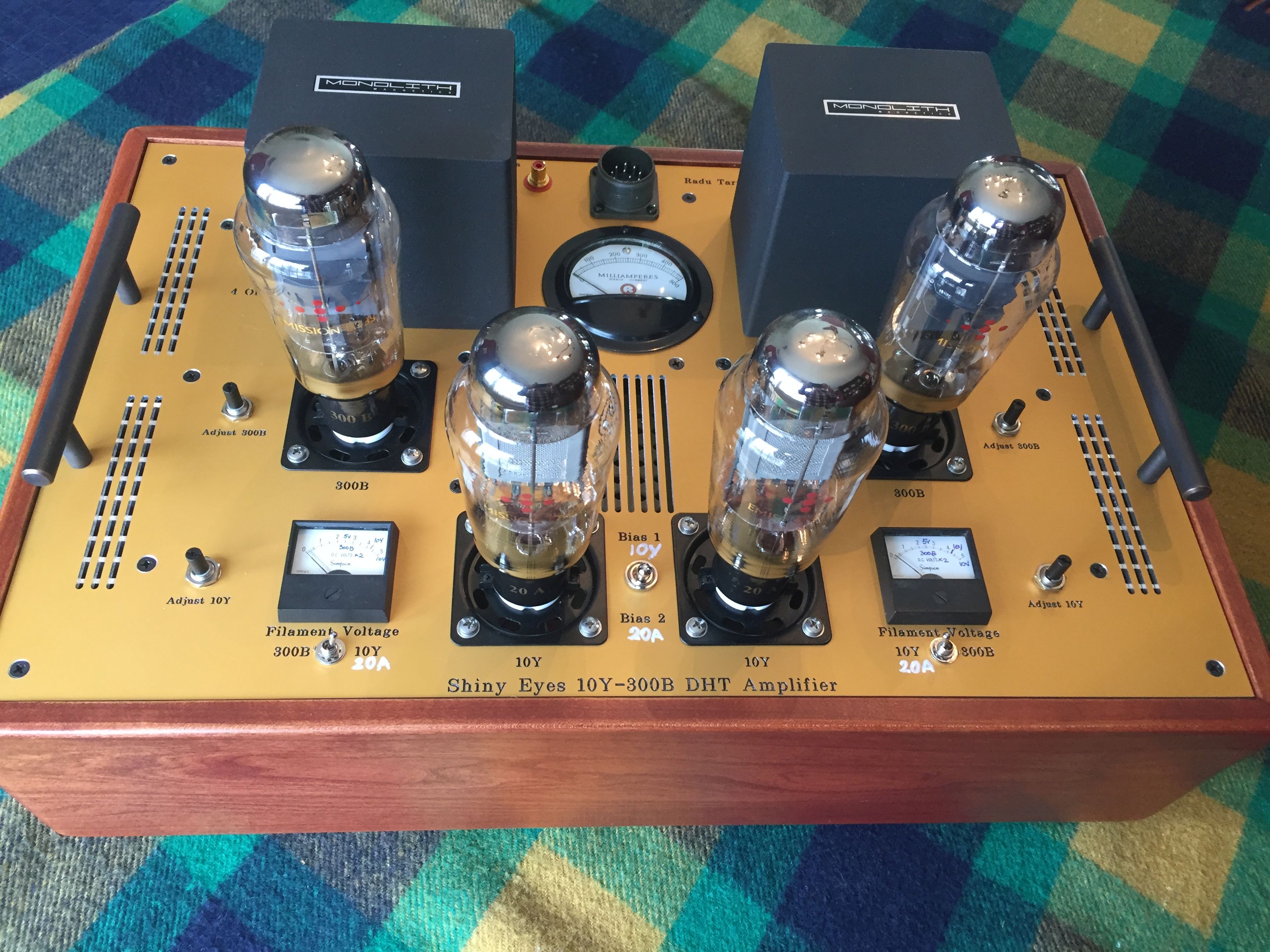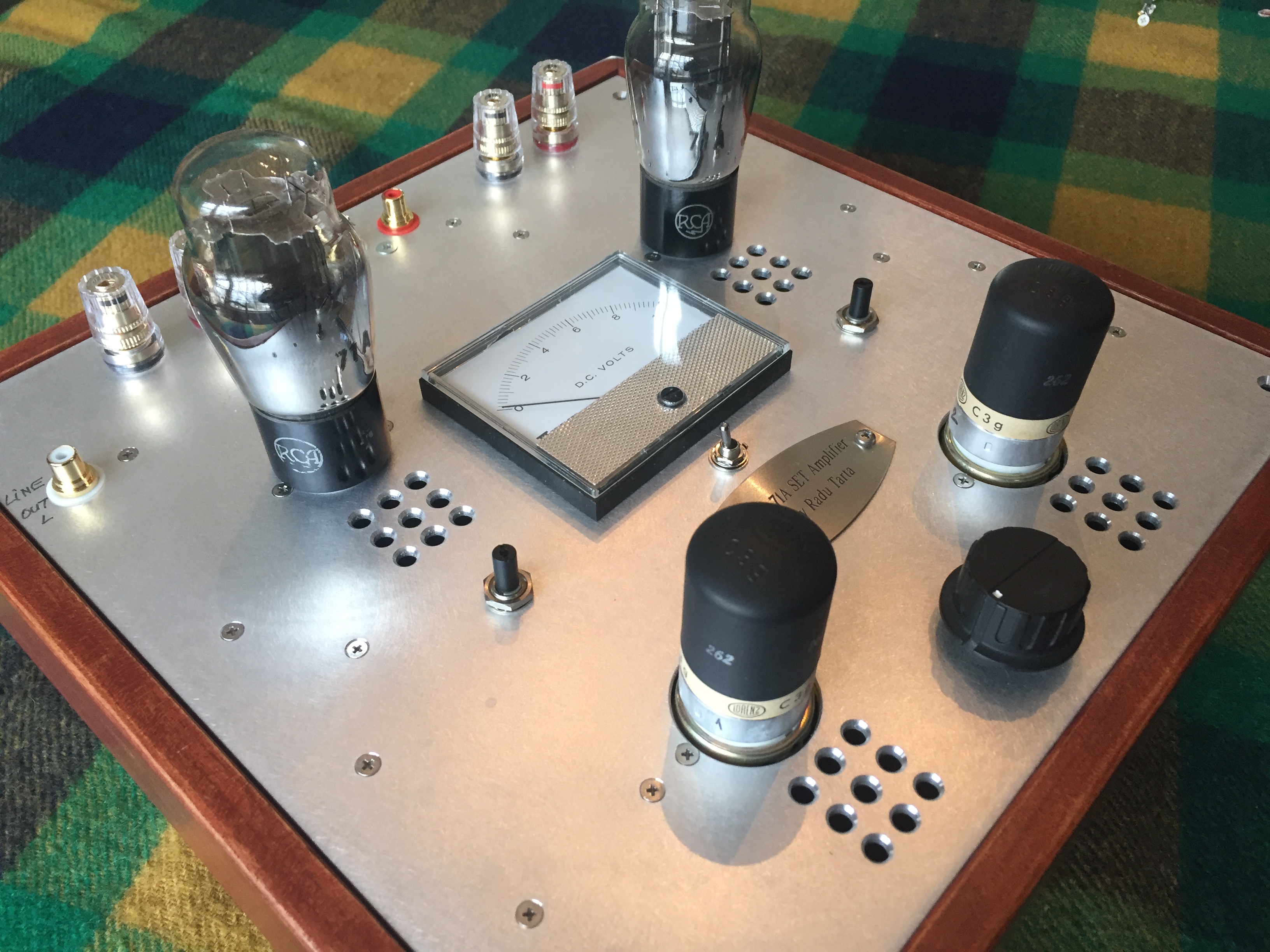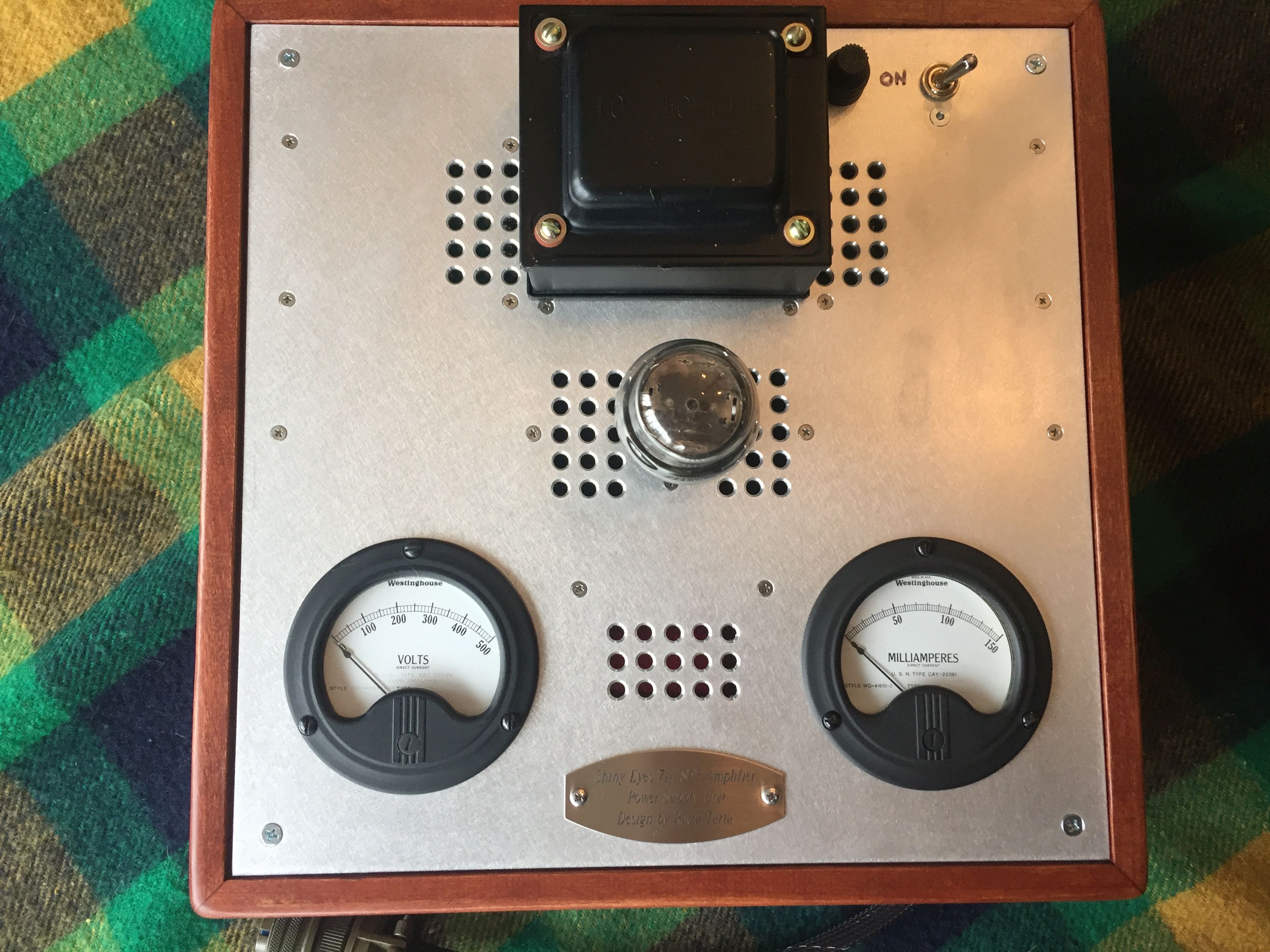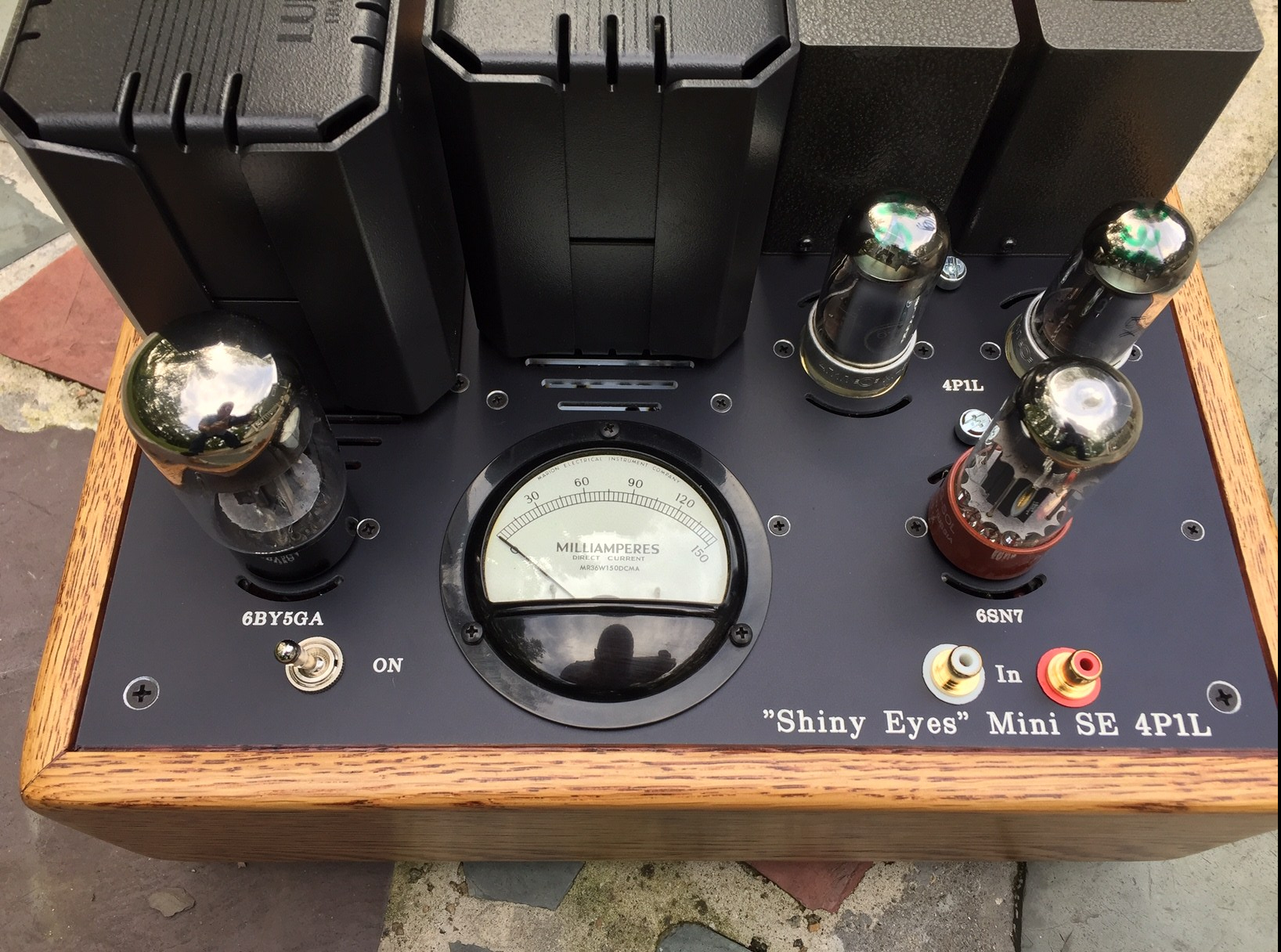
This project started when I found a pair of LL2765/75mA amorphous core waiting to be used. I’ve built a 300B HP amp using these types of transformers. I needed something different. I needed an HP amp that was more versatile and could be used as a high gain preamp and low cost tubes, the power being preferable DHTs. The DHP wired triode 4P1L was the proper tube for this implementation. I’ve been successful building several PSE4P1L amplifiers and tried them on headphones. The result was a very pleasant (2nd harmonic predominant), quick and clean sound. 4P1L in triode mode has quite a bit of input capacitance and 2 in parallel will give the driver about 400pF to deal with. Therefore, the driver must be a powerful one and considering the gain I needed, I chose and tested the 6H30PI and the 6H6P. These are inexpensive tubes and a very good match to the 4P1L. I initially considered a dual chassis HP amp. However, I was confident I can make it quiet in one enclosure, and I did. Despite my efforts to make it as compact as possible, the amp/preamp enclosure is 19.25×15.5×11” ( WXDXH) and weights 45 lbs.
The power supply section takes about 2/3 of the real estate. It has an audio grade 200VA Antek toroidal that powers the high voltage and the DC filament regulator for the driver. There are 2 separate supplies for each of the 2x4P1L filaments and it is regulated by the highly praised Coleman filament regulators. The high voltage is tube rectified, using TV dampers 6CJ3, and CLCLC filtered using Lundahl LL2742 chokes in CMMR configuration for the highest common mode ripple rejection. This power supply provides DC all around and makes this HP amp/preamp very quiet.
The signal section of the amp is very simple. The driver is loaded on a CCS and it is capacitor coupled to the power stage. The power stage is loaded on the Lundahl LL2765AM/75mA and it is self-biased as well as the driver stage. I implemented it with high quality and appropriate type of parts and materials.
The chassis is made of 5/4” American cherry hardwood stained with General finishes Antique walnut and coated with 5 coats of General finishes oil based topcoat. The top plate is a sturdy 1/8” brushed aluminum that holds all the equipment besides the IEC which is installed on the back of the wood chassis.
The exquisite sound headphone amp is provided with a high Quality Neutrik phone jack. The volume pot is a TKD CP2511 and a 1.5” NOS bakelite knob. There are few features on the top plate:
- On the left side is the mains On/Off switch
- In the middle there is a 500mA NOS Hoyt panel meter. This measures the high voltage supply current which should be around 170mA
- On the right side there are 2 sets of RCAs. One in the back is the input and the other the output when used as a preamplifier.
- On each side of the 4P1L tubes there is a set of tip jack insulated test points. Measuring the voltage (either side) you will basically read the total plate current of the corresponding channel. The voltage in mV corresponds to the current in mA.
The spec measurements of this device showed the following:
- Maximum output power is 3W on 32 ohms headphones, 0.56W on 120 ohms and 0.22W on 300 ohms
- The input sensitivity is about 0.9Vrms (6H30PI driver) and 0.6Vrms (6H6P driver) for full power output.
- Output impedance of this HP amp/preamp is around 7 ohms
- The frequency response is 20Hz-20kHz +/- 0.5dB
- The THD is 0.55% at 1W on 32 ohms, 0.81% at 2W on 32 ohms
- The overall gain is 19dB when using the 6H30PI driver, and 22dB when using the 6H6P driver
- The max output voltage is 8Vrms
- Power consumption 130W



